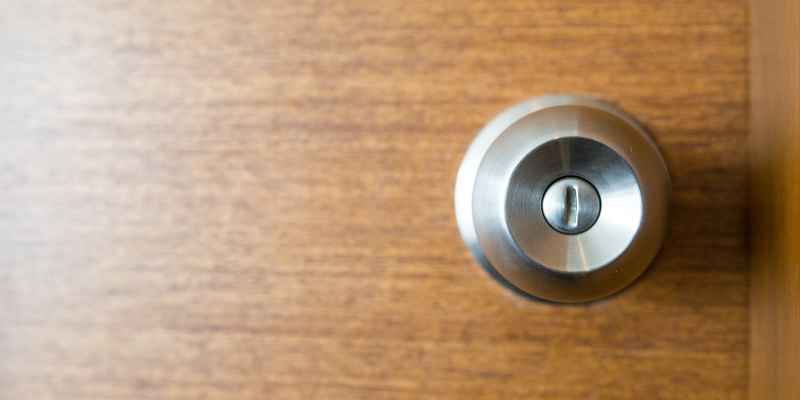To secure wood to metal, use self-drilling screws or Tek screws, which can cut through metal without the need for pre-drilling. These screws are the most recommended option for attaching wood to metal surfaces.
They have a drill bit end that makes it easy to create a secure connection between the two materials. By using self-drilling screws, you can save time and effort in the installation process. Additionally, they provide a strong bond that ensures the wood stays securely attached to the metal surface.
This method is commonly used in various applications, such as construction, woodworking, and DIY projects. Here’s a step-by-step guide on how to attach wood to metal using self-drilling screws.
Methods To Secure Wood To Metal
Securing wood to metal can be achieved using self-drilling screws, also known as Tek screws. These screws come with a drill bit end that easily cuts through metal, making them a time-saving option as they eliminate the need for pre-drilling.
This allows for discrete fastening without the need for unsightly hardware.
Using Self-drilling Screws
Self-drilling screws, also known as Tek screws, are the preferred choice for attaching wood to metal. These screws come with a built-in drill bit end that allows them to penetrate metal without the need for pre-drilling.
Using Nuts And Bolts
Another effective method to secure wood to metal is by using nuts and bolts. By drilling into both the wood and metal, you can directly fasten them together using nuts and bolts for a sturdy connection.
Using Industrial Building Adhesive
Industrial building adhesive is a reliable option for securing wood to metal without the need for drilling or fasteners. This adhesive provides a strong bond that is resistant to environmental factors.
Benefits Of Using Self-drilling Screws
Self-drilling screws, also known as Tek screws, offer various benefits that make them the preferred choice for attaching wood to metal. Let’s explore these benefits in detail.
Time-saving
Self-drilling screws eliminate the need for pre-drilling, saving valuable time during the installation process. The integrated drill bit end of these screws enables them to cut through metal effortlessly, reducing the overall installation time.
Doesn’t Require Pre-drilling
With the drill bit end, self-drilling screws do not require pre-drilling, simplifying the attachment process and minimizing the number of tools needed for the job. This results in increased efficiency and ease of use.
Efficient In Cutting Through Metal
The self-drilling feature of these screws makes them highly efficient in cutting through metal, ensuring a secure and stable attachment of wood to metal surfaces. This capability significantly enhances the reliability and strength of the connection.
Tips For Attaching Wood To Metal
When it comes to working on projects that involve securing wood to metal, it’s essential to have the right tools, techniques, and knowledge to ensure a secure and long-lasting attachment. Whether you’re a DIY enthusiast or a professional carpenter, knowing the right tips for attaching wood to metal can make your project a breeze. Below are some valuable tips that can help you achieve a strong and reliable connection between wood and metal.
Use Countersink Self-drilling Screws
Self-drilling screws, often referred to as Tek screws, are the most recommended screws for attaching wood to metal. These screws come with a drill bit end that enables them to cut through metal easily. This feature eliminates the need for pre-drilling, saving significant time and effort during the attachment process.
Ensure Proper Alignment
Proper alignment of the wood and metal pieces is crucial for a secure attachment. Before fastening the wood to the metal, ensure both materials are correctly positioned and aligned to prevent any misalignment issues that could compromise the attachment’s integrity.
Apply Adequate Pressure
When fastening wood to metal, it’s important to apply adequate pressure to ensure a tight connection. This helps in creating a firm bond between the two materials, preventing any potential loosening or gaps that can compromise the overall stability of the attachment.
Alternative Methods To Attach Wood To Metal
When securing wood to metal, consider using self-drilling screws, also known as Tek screws, as they are highly recommended for this purpose. With a drill bit end that easily cuts through metal, they eliminate the need for pre-drilling, making the process more efficient and time-saving.
This method ensures a secure attachment without compromising the integrity of the materials.
Magnetic Paints
Magnetic paints provide a creative way to attach wood to metal surfaces without the need for traditional fasteners.
Adhesive Tapes
Adhesive tapes offer a quick and easy solution for temporarily securing wood to metal, ideal for lightweight projects.
Mechanical Connectors
Mechanical connectors, such as nuts and bolts, provide a sturdy and permanent way to attach wood to metal structures.
Considerations For Choosing The Right Adhesive

When it comes to securing wood to metal, choosing the right adhesive is crucial for a strong and durable bond. There are several factors to consider before deciding on the adhesive that suits your needs. In this article, we will discuss three primary considerations for choosing the right adhesive: strength and durability, compatibility with wood and metal, and ease of application and clean-up.
Strength And Durability
Ensuring that the adhesive you choose provides sufficient strength and durability is essential. You want a bond that can withstand the weight and stress placed on it over time. Look for adhesives that are specifically designed for bonding wood to metal, as they are formulated to provide exceptional strength. Additionally, consider the load-bearing capacity of the adhesive as it directly impacts the overall durability of the bond. Opting for adhesives with high load-bearing capacities will ensure your wood-to-metal connection remains secure for the long term.
Compatibility With Wood And Metal
Compatibility between the adhesive, wood, and metal surfaces is vital for a successful bond. Check the adhesive’s specifications to ensure it is suitable for bonding both wood and metal. Some adhesives may be more suitable for specific types of wood and metal, so be mindful of the materials you are working with. Additionally, consider the temperature and environmental conditions in which the bond will be exposed. Look for adhesives that can withstand variations in temperature and resist moisture or other environmental factors that may weaken the bond.
Ease Of Application And Clean-up
Opt for adhesives that are easy to apply and clean up, as they can significantly impact the overall efficiency of your wood-to-metal project. Choose adhesives that come in user-friendly packaging, such as tubes or cans with applicator nozzles. This allows for precise application without the need for additional tools. Additionally, consider adhesives that have a reasonable working time, allowing you to adjust the positioning of the wood before it sets. Lastly, look for adhesives that offer easy clean-up options, such as water-based formulas that can be wiped away with a damp cloth.
Expert Advice On Attaching Wood To Metal
For expert advice on attaching wood to metal, opt for self-drilling screws like Tek screws. With their drill bit end, they effortlessly cut through metal, eliminating the need for pre-drilling and saving valuable time. Experience a secure and efficient wood-to-metal attachment using these recommended screws.
Tips And Tricks
When it comes to attaching wood to metal, there are several tips and tricks that can help ensure a secure and long-lasting connection.
- Pre-drill Holes: Before driving screws into metal, it’s important to pre-drill holes in the metal to prevent it from cracking.
- Choose the Right Screws: Self-drilling screws, often referred to as Tek screws, are the most recommended screws for attaching wood to metal. They come with a drill bit end that enables them to cut through metal easily. This feature removes the need for pre-drilling, which can be a significant time saver.
- Use Washers: Placing washers between the wood and the screw head can help distribute the force evenly and prevent the wood from splitting.
- Apply Adhesive: Using a construction adhesive in addition to screws can provide extra stability and prevent the wood from shifting over time.
Common Mistakes To Avoid
When attaching wood to metal, it’s important to avoid these common mistakes:
- Not Preparing the Surface: Before attaching wood to metal, make sure to clean the surface and remove any rust or debris that could compromise the connection.
- Using Incorrect Screws: Using the wrong type or size of screws can lead to a weak connection or damage to the materials. Be sure to choose screws specifically designed for attaching wood to metal.
- Over-tightening Screws: Over-tightening screws can cause the wood to split or the metal to warp. It’s important to tighten the screws just enough to secure the wood without applying excessive force.
- Skipping Pre-drilling: Pre-drilling holes in the metal is essential to prevent cracking and ensure a secure attachment. Skipping this step can result in a weak connection.
Recommended Tools And Equipment
Here are some recommended tools and equipment for attaching wood to metal:
| Tools | Equipment |
|---|---|
| Drill | Self-drilling screws (Tek screws) |
| Screwdriver | Construction adhesive |
| Wrench | Washers |
Frequently Asked Questions On How To Secure Wood To Metal
How Do You Fasten Wood To Metal?
To fasten wood to metal, use self-drilling screws, also known as Tek screws. These screws have a drill bit end that cuts through metal, eliminating the need for pre-drilling. Simply drive the screws into the metal to securely attach the wood.
What Is The Best Way To Join Wood To Metal?
The best way to join wood to metal is by using self-drilling screws, also known as Tek screws. These screws have a drill bit end that cuts through the metal, eliminating the need for pre-drilling. It’s a time-saving method that securely fastens the wood to the metal.
How Do You Attach Wood To Metal Without Drilling?
To attach wood to metal without drilling, use self-drilling screws, also known as Tek screws. These screws have a drill bit end that cuts through metal efficiently, saving time. Simply drive the screws into the metal to secure the wood.
How Do You Attach Wood To Metal I Beam?
To attach wood to a metal I-beam, use self-drilling screws or Tek screws. These screws have a drill bit end that cuts through metal easily, eliminating the need for pre-drilling and saving time. Alternatively, you can use industrial building adhesive to glue battens to the metal surface.
Conclusion
When securing wood to metal, self-drilling screws are the top choice for a strong and efficient attachment. These screws cut through metal with ease, eliminating the need for pre-drilling and saving valuable time. By using the right fasteners, you can ensure a secure and reliable connection between wood and metal surfaces.


